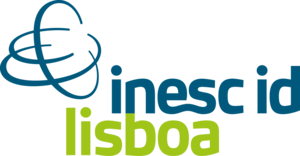About Us
From HLT@INESC-ID

INESC-ID is an R&D institute dedicated to advanced research and development in the fields of Information Technologies, Electronics, Communications, and Energy. It is a non-profit institution, privately owned by IST and INESC, officially declared of public interest. It was created in 2000, as a result of a reorganization of INESC, an institution which also played a pioneering role at the national level both in research and in the creation of SMEs. In 2004, INESC-ID was recognized by the Portuguese Government as an "Associated Laboratory".
INESC-ID incorporates a body of highly qualified researchers, including more than 70 researchers holding a PhD and numerous post-graduate students. The majority of the PhD researchers are university professors. This body of researchers enables INESC-ID to act in the different phases of the R&D process. The intense activity developed by INESC-ID resulted in a large number of scientific papers published in specialized journals and international conferences, industrial prototypes, and computer systems based on state-of-art technologies, as well as a number of patents and awards.
INESC-ID operates in the following scientific areas: AI for People & Society, Automated Reasoning & Software Reliability, Communication Networks, Distributed, Parallel & Secure Systems, Green Energy & Smart Converters, Graphics & Interaction, Human Language Technologies, High Performance Computing, Architectures & Systems, Information & Decision Support Systems, Nano-Electronic Circuits & Systems, and Sustainable Power Systems.
The Human Language Technology laboratory, as a congregation of people working on human language technology and related matters, is the natural evolution of the Spoken Language Systems Laboratory (L²F), a laboratory created in 2001, to bring together several research groups of INESC and independent researchers to contribute to the area of computational processing of spoken language for European Portuguese. The long term goal of L²F was to bridge the gap between natural spoken language and the underlying semantic information.
The HLT laboratory includes researchers/faculty from various universities, as well as graduate and post-graduate researchers. Their background ranges from Electrical Engineering, to Computer Science, and Linguistics. This strongly interdisciplinary group is actively involved in many areas of language research and development, both spoken and written, including, without limitation, speech recognition, speech synthesis, speech coding, speech understanding, audio indexing, multimodal dialogue systems, language and dialect identification, speech-to-speech machine translation, automatic summarization, natural language database interfaces, natural language generation, text simplification, named entity recognition, question answering, among others and in no particular order.